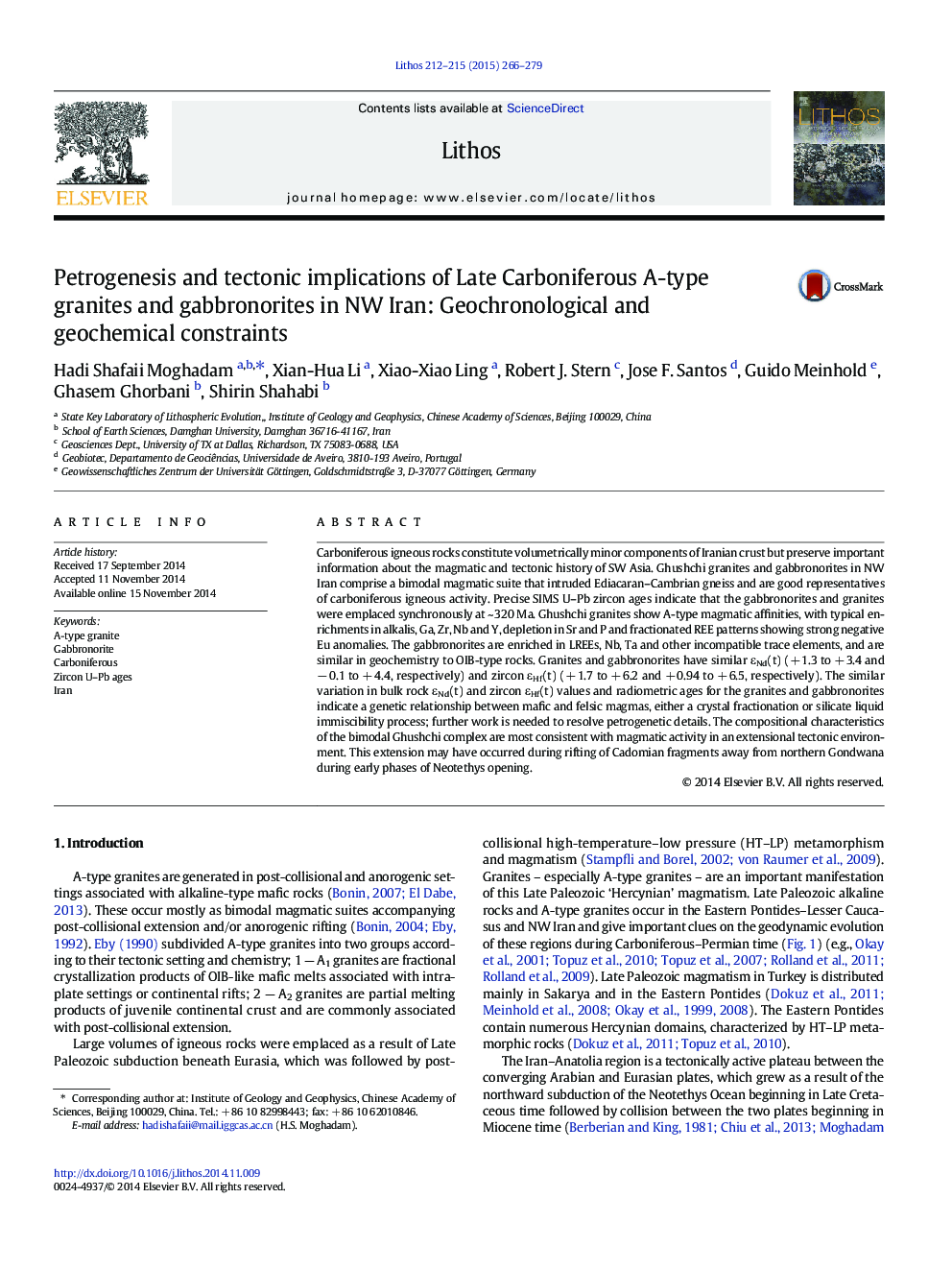| کد مقاله | کد نشریه | سال انتشار | مقاله انگلیسی | نسخه تمام متن |
|---|---|---|---|---|
| 4715800 | 1638669 | 2015 | 14 صفحه PDF | دانلود رایگان |
• The Ghushchi bimodal complex includes both A-type granites and gabbronorites.
• Gabbronorites and A-type granites were emplaced synchronously at ~ 320 Ma.
• The Ghushchi complex is related to magmatic activity in an extensional environment.
Carboniferous igneous rocks constitute volumetrically minor components of Iranian crust but preserve important information about the magmatic and tectonic history of SW Asia. Ghushchi granites and gabbronorites in NW Iran comprise a bimodal magmatic suite that intruded Ediacaran–Cambrian gneiss and are good representatives of carboniferous igneous activity. Precise SIMS U–Pb zircon ages indicate that the gabbronorites and granites were emplaced synchronously at ~ 320 Ma. Ghushchi granites show A-type magmatic affinities, with typical enrichments in alkalis, Ga, Zr, Nb and Y, depletion in Sr and P and fractionated REE patterns showing strong negative Eu anomalies. The gabbronorites are enriched in LREEs, Nb, Ta and other incompatible trace elements, and are similar in geochemistry to OIB-type rocks. Granites and gabbronorites have similar εNd(t) (+ 1.3 to + 3.4 and − 0.1 to + 4.4, respectively) and zircon εHf(t) (+ 1.7 to + 6.2 and + 0.94 to + 6.5, respectively). The similar variation in bulk rock εNd(t) and zircon εHf(t) values and radiometric ages for the granites and gabbronorites indicate a genetic relationship between mafic and felsic magmas, either a crystal fractionation or silicate liquid immiscibility process; further work is needed to resolve petrogenetic details. The compositional characteristics of the bimodal Ghushchi complex are most consistent with magmatic activity in an extensional tectonic environment. This extension may have occurred during rifting of Cadomian fragments away from northern Gondwana during early phases of Neotethys opening.
Journal: Lithos - Volumes 212–215, January 2015, Pages 266–279
